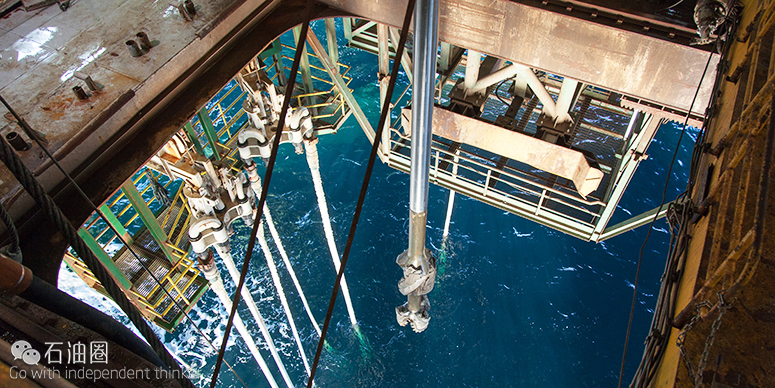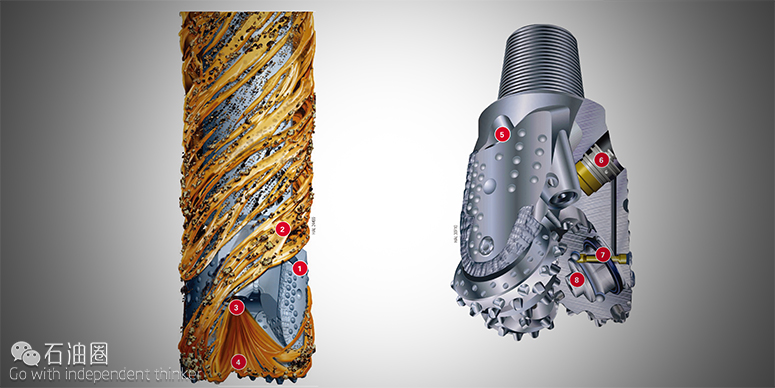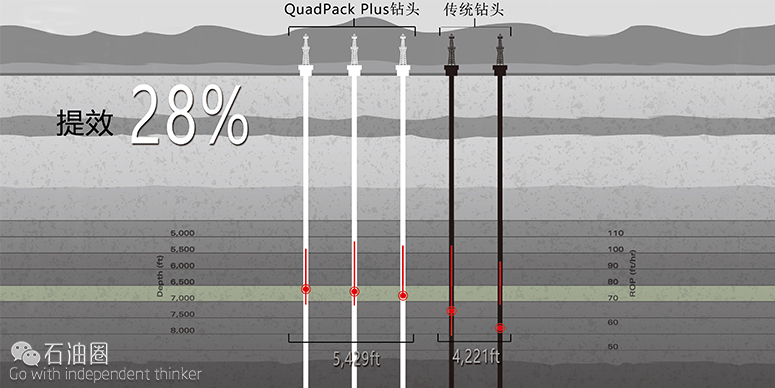As more wells are drilled deeper and into harder and more-abrasive formations, challenges for drill bits in terms of rate of penetration (ROP) and durability are more demanding. The worldwide increase in drilling activity has led to increased rig rates. Drilling engineers have to re-evaluate bottomhole assembly designs, drilling processes, drilling fluids, and applications to reduce costs.
Drill bits have a significant impact on opex. They have to drill faster and last longer. This is what drilling engineers have come to expect from the bit companies.
Different types of drill bits are available for various applications. These types include polycrystalline-diamond-compact (PDC), impregnated, and roller-cone bits.
Bit-behavior analysis with different vibration modes has become standard. These analyses have led to new PDC cutters with high abrasion resistance. The cutters stay sharper longer to improve ROP and durability.
Substantial ROP and durability improvements also are seen with impregnated bits. These improvements resulted from detailed evaluations on the effects of drive tools (rotation speed and power regime), downhole-pressure environment, and depth of cut on impregnated bit performance.
Halliburton says that in an effort to mitigate these problems by improving flow efficiency, roller cone bit manufacturers have attempted to design bits that better control fluid flow through use of varying nozzle designs and configurations. A typical solution has been to create “directed hydraulics” by orienting bit nozzles in a specific direction to direct the flow, the company says.
The company says that in conventional roller cone designs, this approach to “directed hydraulics” typically results in flow regimes that generate a turbulent flow in the vicinity of the cutting structures. Rather than lifting cuttings, the turbulence may inhibit or even prevent cuttings removal from the bottom of the hole. As a result, cuttings are re-circulated, hole quality suffers, penetration rate drops, and bit life is cut short, the company explains.
Based on the latest advancements in fluid flow optimization, Halliburton says it has developed a new bit design platform that incorporates engineered hydraulics to overcome the flow problems inherent in conventional roller cone designs by capitalizing on the way a roller cone bit works.
New technologies are improving seal reliability and cutting-structure durability for roller-cone bits. Also, new developments in metal-seal-bearing technology have increased the on-bottom drilling time of roller-cone bits.
Drill Bits and Services has completely revamped its line of roller cone bits and created a new performance leader, the QuadPack® Plus bits. Drill Bits and Services manufactures the bit line in a remarkable new plant, a facility which sets the benchmark for eth ciency, precision, and quality control.
Drill Bits and Services dedicated a highly talented team to re-design, test, and deploy a new generation of roller cone bits to take the lead in reliability, using the most advanced R&D technologies. Full scale laboratory testing enabled the company to fine tune bit designs by applying actual drilling parameters such as weight-on-bit, RPM, and operating temperatures. the company modeled computational fluid dynamics (CFD) to optimize cleaning eth ciency, taking hydraulics to a new level. And th nally in the th eld, hundreds of bit runs confirmed that QuadPack Plus bits outperformedthe others, run after run.
a.More Responsive Pressure Compensation System
b.Enhanced Seal Reliability
c.Unique arm profi le creates fluid lifting action to entrain cuttings and move them up the hole for more efficient cleaning.
d.Larger, More Robust Arms
e.Larger Bearing Capacity
1.UNIQUE ARM PROFILE
Only QuadPack Plus bits feature a curved armprofi le that creates fl ow channels and lifting surfaces that entrain cuttings up the annulus.
2.COMPARE QUADPACK PLUS TO CONVENTIONAL BITS
CFD tests (Computational Fluid Dynamics) show that QuadPack Plus bits dramatically improvecleaning circulation with greater force and thoroughness. This illustration is a stylized rendering of an actual CFD test.
3.ORIENTED NOZZLE FLOW
Oriented nozzles are directed towards the leading cutting-edge tomaximize cutter formation engagement. Flow-channels between the arms provide effi cient passage to clear cuttings off bottom-hole and circulate themup the annulus. This illustration is a stylized rendering of an actual CFD test.
4.BETTER CLEANING BELOW THE BIT
CFD tests show QuadPack Plus bits provide amore complete sweep across the bottomof the hole to improve rates of penetration and decreasing redrilled cuttings. This illustration is a stylized rendering of an actual CFD test.
5.LARGER, MORE ROBUST ARMS
The result is greater durability, improved protection, and larger reservoir for increased grease capacity. Left, the former arm. At right, the new larger arm.
6.MORE RESPONSIVE PRESSURE COMPENSATION SYSTEM
A more responsive system signifi cantly reduces differential pressure variation on the seal. This equalizes pressure inside and out, which greatly diminishes seal stress and enhances the durability of the bearing-seal system. The rubber diaphragm system is quick acting in achieving pressure equalization.
7.GREATER SEAL RELIABILITY
Greater reliability is the result of higher thermal properties and improved wear resistance in seal materials. The system has also been re-designed to be more effective in preventing contamination encroachment.
8.INCREASED BEARING CAPACITY
Efficient load distribution across the bearing surface has significantly increased the load carrying capacity for today’s more demanding application. Left, the former bearing. At right, the new bearing for bits 13-1/2” and smaller.
CASE STUDY1
Long bit life and downhole durability are crucial to successful air drilling. With conventional technology, fluid flow in the vicinity of cutting elements is turbulent and often inhibits upward flow of formation cuttings, creating faster erosion of drill bits and decreasing rates of penetration (ROP). Halliburton’s QuadPack Plus bits features strong arms for more surface area and greater stability. The bits also feature directed flow channels that effectively remove cuttings from crucial areas of the cutting structure and wellbore. Each Quadpack Plus bit component contributes to faster rates of penetration, longer bit life, and less cleaning time, as demonstrated in the Marcellus Shale Play. Of five wells air drilled from a pad in Barbour County, West Virginia, the conventional bit drilled just 4,221 feet (1286 m) in two wells, with an average ROP of 61.45 ft/hr (18.72 m/hr). The EQH45R QuadPack Plus bit was deployed in three wells, drilling a total combined footage of 5,429 feet (1654 m) with an overall average ROP of 78.26 ft/hr (23.85 m/hr), a 28% increase.
CASE STUDY2
An East Texas well in Orange County, Texas, required directional work in the long 12¼-in. surface section, where the operator challenged Halliburton to provide a bit capable of drilling the entire hole section in a single bottom hole assembly (BHA) run while drilling on a motor to successfully build to 46.1° from vertical. Halliburton recommended a new 12¼-in. EQHC1GRC roller cone design, one in the QuadPack® Plus line of premium bits, which combines Energy Balanced® bit design and specific longevity features with engineered hydraulics to produce optimum drilling performance over the bit life. The EQHC1GRC bit drilled from 134 ft measured depth (MD) to section total depth at 3,125 ft MD in 28.5 hours, for a total run length of 2,991 ft and an outstanding average overall rate of penetration (ROP) of 105 ft/hr. In addition to exceeding all offset penetration rates, the EQHC1GRC bit was pulled with excellent dull condition, and was dull graded: 0-0-WT-A-E-E-E- I-NO-TD, with all seals and bearings in excellent condition.
RESULTS
In this outstanding single run perfor-mance, the QuadPack Plus EQHC1GRC bit from Halliburton successfully achieved the operator’s objective, drilling 2,991 ft of directional surface hole at a new benchmark ROP of 105 ft/hr to drop cost per foot from an offset high of $40.27/ft to just $22.11.

 石油圈
石油圈


